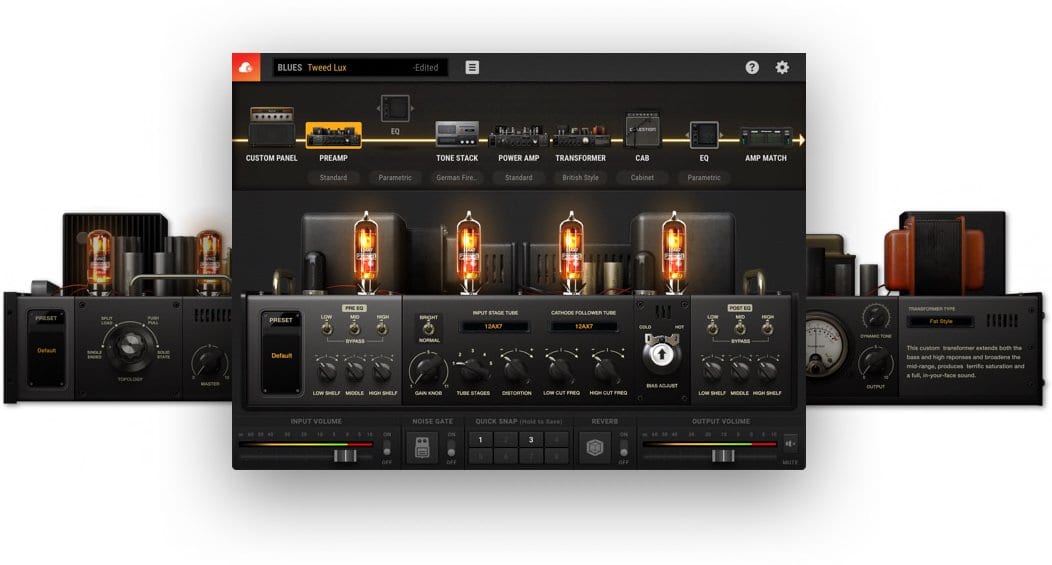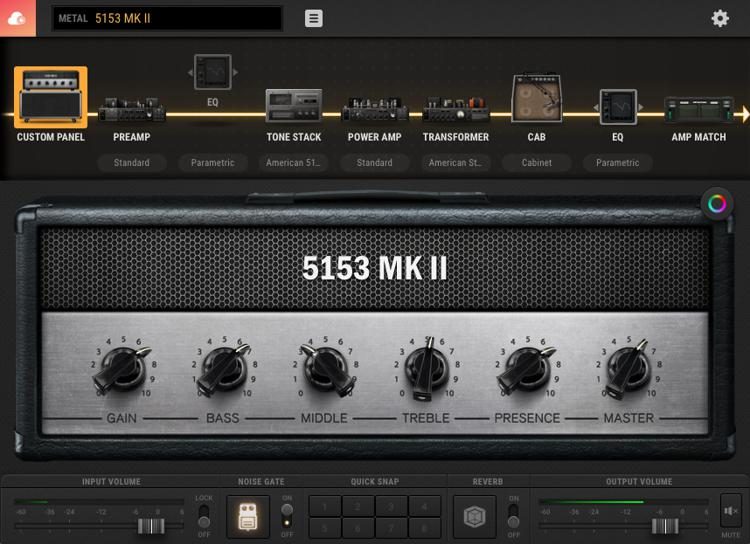- Low Gain Name Inspired by Standard Professional Elite 67 Blackface V2 Fender Blackface Super Reverb. 69 Duo Verb V2 Fender Twin Reverb. 77 Silver Tone V2 Fender Vibro Champ Silve.
- Fixed bias amps have a bias circuit that puts a negative voltage on the power tube grid. The grid of cathode biased amps will be at 0 volts. Tubes have a maximum dissipation rating in watts for how much power (and therefore heat) they can deal with so we adjust the tube's bias voltage (voltage between the grid and cathode) to keep the bias.
Bias Amp 2 is the ultimate virtual amp designer, authentically recreating the tone and feel of real tube amplifiers, while allowing you to mix and match components to create your ideal amp. Check Price On Plugin Boutique Check Price On Positive Grid Bias Amp 2 is software that’s available in 3 grades. Standard, Pro, and elite. Tube amps are well known for their impressive sound quality. However, they tend wearing out and subsequently, they tear out, and this usually happens within a short period. Therefore, if you know how to bias a tube amp accurately, you will reduce the chances of this happening or lessen how much it wears out.
Cathode Bias vs. Fixed Bias: What’s the difference?
The terms cathode bias and fixed bias are often used to describe amps but lots of folks are not really sure what they mean. I will briefly provide a technical explanation and then provide some bullet points of the major differences in tone, maintenance and power.

Technical Explanation (feel free to skip ahead) :
All power tubes needs to be biased in some fashion to function. Biasing controls the amount of power a tube dissipates relative to the voltage applied to it. Without biasing a tube would just burn up. You could think of it as a train without breaks. A poorly biased tube can either be biased too cold making it sound dull and lifeless or biased too hot where the tube is destroying itself. When using the terms cathode or fixed bias we are discussing the power tubes of an amp (pre-amp tubes in instrument amps are nearly always cathode bias or grid-leak biased but that is a discussion for another time). In cathode bias a small value resistor is placed between the cathode and the ground so it develops negative voltage on the cathode thus achieving bias. As you hit a note the tube calls for more power and negative voltage on the cathode decreases briefly changing the tube's bias. This gives cathode biased amp their awesome sustain. In fixed bias a separate circuit provides negative voltage to the grid of the power tube and the cathode is simply grounded. Since the grid is negative relative to the cathode thus bias is achieved. Since the voltage applied to the grid does not change the bias is “fixed”. This is what give fixed biased amp a crisper stiffer response.
So what is the difference?

Cathode bias amps have more sustain and dynamics but a spongier response particularly with bass notes (more sag). Fixed Biased amps have a firmer feel but less dynamics and sustain. One thing to note is that properly set up cathode bias can be quite firm but still singing.
With all other things equal: Cathode biased amps are more easily overdriven. Fixed biased amps are cleaner.
Cathode Biased amp do not require biasing to change power tubes. Fixed biased amps require biasing to change power tubes as well as periodic bias checks to ensure they are working properly.
Cathode biased amps are less efficient than fixed bias amps. Example: a cathode bias Tweed Bassman type amp with two 6L6’s would be about 25 to 30 Watts. The same amp in fixed bias would be about 40 Watts. It is important to note that the volume difference is actually quite minimal. Many tube amps are over powered for the average users volume needs.
One thing to keep in mind is that fixed bias and cathode biased amps are often biased differently. Cathode biased amps are often bias very hot and near Class A (tube amp rarely actually meet the standard for being true class a). The idea was often to maximize power. Fixed bias amp are more usually biased cooler in class A/B. These two bias conditions sound. Many cathode bias amp will benefit from reducing the dissipation a bit by increasing the value of the cathode resistor. The tubes will last longer and the amp will sound better. Biasing should really based on what sound best rather than an attempt to maximize power.
Be sure to check out my amps too! If you have any tube amp questions feel free to ask; I'll post answers in new articles!
Whether you currently own or are considering exploring the wonderful world of tube amplifiers, there are a few things you should know to make sure you get as much enjoyment and life out of your valve gear as possible! I am of course referring to tube bias - an important part of amp care that will increase tube life and the overall sonic performance of your stereo.
Looks That Can Kill
We can’t stress this enough - make sure proper care is taken whenever operating or making adjustments to your tube amplifier. Even when unplugged, the amplifiers capacitors are charged with enough high voltage to be fatal! Most is common sense but if you are ever uncertain, seek the help of a professional.
General tips:
-Make sure the amp is unplugged before changing tubes or parts.
-Tubes get hot, don’t touch them.
-Safety glasses are always a good idea!
-Wear short sleeves and remove any rings or jewelry.
-When prodding an amp keep one hand at your side - you don’t want to complete a circuit with your arms. Current going through your heart is bad!

What is Amp Bias?
No matter the manufacturer, how good the design is, or the quality of the parts used, tubes will eventually wear out. They also don’t wear at even rates meaning eventually some tubes will be working harder than others. Without getting into too much detail, changing the bias controls the amount of current that flows through the vacuum tubes of your amplifier, with each having an optimum setting. If the bias is set too low (often referred to as running cold) the amp can sound thinner and less dynamic, and generally won’t be performing at its best. If set too high (often referred to as running hot) it can sound harsher, less accurate, and can greatly reduce the lifespan of the tube.
Simply put, we want to make sure all the tubes are working (roughly) at the same strength and thus have the appropriate amount of current flowing through them. Left unchecked, we risk not only blowing a tube, but risk damaging other components of the amplifier.
There are 3 different types of tube amp bias:
Self Biasing/Cathode Bias: As the name suggests, these amplifiers are essentially ‘plug-and-play’ and will not need to be tinkered with if tubes are being replaced. Enjoy your music and if you blow a tube, just replace it with a matching one and you’re ready to go!
Adjustable Fixed Bias: Amps that fall into this category include an internal or external potentiometer/knob that with some basic knowledge, can be adjusted with ease to set the bias.
Non-Adjustable Fixed Bias: This category can be the most labour intensive when it comes to setting the correct bias. They use a fixed resistor soldered into the amp to set the bias and for the most part, can be used with a wide variety of tubes that have the same operating characteristics as the ones being replaced. This means it is important to buy matched sets of tubes because it is harder to optimize them.
For this quick guide we will only be looking at Adjustable Fixed Bias amplifiers, which will be the most common for hi-fi valve-amps. If you are uncertain which you currently own, check the owner's manual. Most manufactures will even include instructions on how to measure and adjust tube bias for their products. They will more often than not give you the actual range to set the bias to as well.
When Should I Check The Bias?
If your amplifier is getting regular use (2+ hours a day), you should at a minimum check the bias every 3-6 months. If you notice the sound has started to change, become noisy, or a tube isn’t lighting up as it used to, it could be a sign the bias needs to be set. If you are replacing tubes the bias should always be checked before listening.
Tools Needed
-A multimeter with optional alligator clips
-A set of plastic flat-head screwdrivers
Bias Amp 1
How To Proceed
To ensure you get a proper reading, the amplifier must be on and warmed up. We recommend waiting around 30+ minutes after the amp has been powered on before checking. NOTE: Always make sure your tube amplifier is plugged into your speakers! Without a load you won’t just get an improper reading, you risk destroying the transformers which can be a big expense.
If you are fortunate enough to own an amplifier whose manufacturer included external test points for your multimeter (eg. Lab 12, Air Tight, Audio Research), adjusting bias is a breeze!
*Audio Research VS115 Pictured
Find the test points on your amplifier labeled V1, V2, etc. Set your multimeter to DCV > 200m. Insert the black and red ends into the proper test points and note the reading on your multimeter. Locate the bias trim/knob labeled V1, V2, etc, (usually located on the top near the front of the amplifier) and with your screwdriver make very slight turns and watch the readout change. Once you get the bias set to the manufacturer's recommendation, move on to the next. It is wise to go back and re-check the readings after doing all of the tubes, as sometimes ones previously biased can be effected by as much as 10-20%.
If your amplifier does not have the bias points and trim pots accessible there will be a bit more work needed.
First you must open the amplifier chassis to expose the electronics within. You will have to (carefully) look for two things. First find the bias test point which should labeled and located near the tube you are testing.
You will then need to find the corresponding bias trim pot with the matching V#. They come in many forms but should be labeled and resemble the photo below.
Attached the black lead of the multimeter with the alligator clip to the metal chassis of the amplifier - remember to keep one arm at your side. This is to ground the connection on your multimeter. Next put the positive lead of the multimeter to the bias test point and check the reading. Adjust the trim pot until the bias is set to the correct number. Repeat this on the rest of tubes and as mentioned before, re-check after adjusting all of them to make sure there aren’t any fluctuations.
Bias Amp App
Sit Back and Enjoy!
This is a very basic guide for checking the bias of a tube amp. There are always exceptions and with many different amp types, these instructions may vary. Whenever in doubt, ask a professional for help and avoid any risks - especially if your amp doesn’t give you such easy access to bias points and trims. With a little elbow grease you can enjoy the many sonic benefits of your tube amp for years to come!